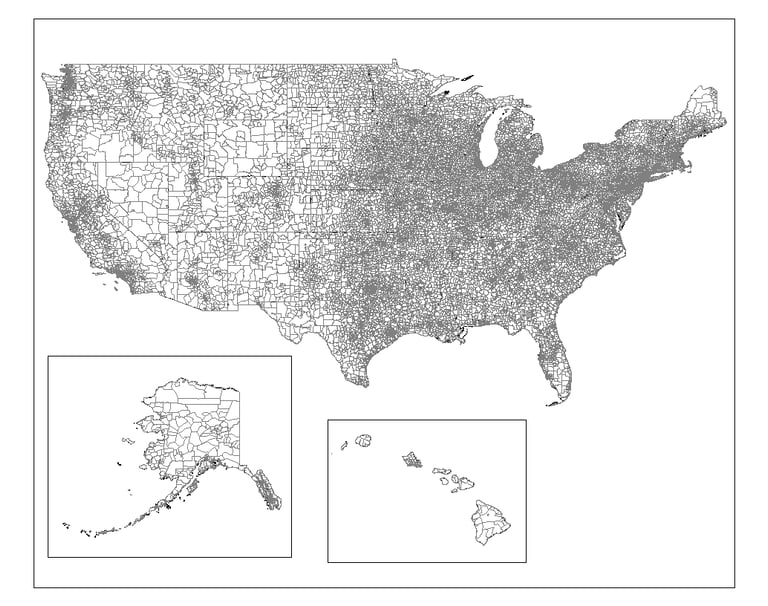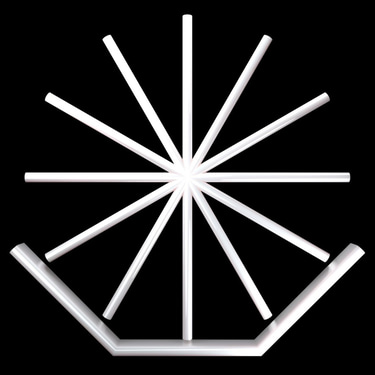The Countdown Continues: Networked Nation
11/4/2013


As the countdown ticks towards the November 8 deadline of our Call for Entries for Issue 5 of GRAPHITE we felt it appropriate to continue our musings on this year’s theme of networks. For more information on submitting your contribution click here.
Networked Nation: The Landscape of the Internet in America begins with the unostentatious entrance into the modest container that is the Center for Land Use Interpretation (CLUI) in Culver City. Tucked into the droning facades along Venice Boulevard, CLUI hums – unassumingly – the tune of an omnipresent narrator, an unnoticed recorder of the United States’ many landscapes. Its mission is one “dedicated to the increase and diffusion of knowledge about how the nation’s lands are apportioned, utilized, and perceived.
Networked Nation has been assembled to look “at the roots… and concrete of the internet” beginning with an introductory tableau of the US’ opening up to commercialized internet communication in the 1990’s. The opening text alludes to the birth of a new technological corpus within the United States: thousands of miles of a “network of fiber optic wires” were unfurled into the American underground. The subterranean proliferation prompted a “new kind of building… the dedicated data center… growing in suburban office parks, and out in the countryside where the vines of fiber meet the vines of electricity.”
The exhibition then doubles back before the turn of the 19th century, in order to lay the underpinning for the “electric information of the world,” that has come to be “embedded in the nation’s ground.” It begins with Alexander Graham Bell, and the founding of AT&T in 1877. The informational text, while somewhat sparse is supplemented by diagrams and photographs that literalize (and in some cases dramatize) the technological revolution unseen; the maps show the bolded contour of the United States filled with spindly lines representing primitive telephone wires that propagated into today’s dense entanglements of fiber optics. And the telephonic network’s 19th and early 20th century expansion works as a segue into the real flesh of the subject: the internet.
ARPANET – an ostensible typo/mystery to the contemporary laymen – was an avant-garde concept and acronym of excitement for those involved in the later half of the 20th century. The Advanced Research Project Agency Network (ARPANET) was considered the first inclusive nationwide computer network that communicated through the thousands of miles AT&T’s existing coaxial cables. ARPANET began as a 1960’s daydream of the US Department of Defense, and evolved into a four-node data-packet switching network that was deployed to four locations: Stanford University, UC Santa Barbara, University of Utah, and UCLA. After the first message was sent by UCLA student programmer Charley Kline on October 29, 1969 from Boelter Hall, the system quickly grew to become a beast of one hundred-plus nodes.
Cut forward just over two decades to 1991, when the military “split off its part of the system (MILNET)” while the remainder of the internet-like system was “administered by the National Science Foundation,” which included mostly (if not all) non-defense university departments, and more increasingly: commercial users. The remainder of the 1990’s commercialization of the internet lead to the dotcom bubble, which instigated a demand for increased bandwidth – to which internet providers obliged. Jump forward just over two decades of exponential growth and we find ourselves in a time and place where the internet has become a fixture of our landscape and our history.
As the exhibition makes clear: the necessities for a networked nation are different than the past. With the spawning of this new (and somewhat elusive) informational internet body, came an imperative to house it; Networked Nation proffers a new breed of building termed: “information architecture” as the site of an intangible network’s physical convergence. Buildings described as “windowless boxes, often with distinct design features, such as an appliqué of surface graphics, or a functional brutalism, surrounded by cooling systems. A building that is a machine…”
By the conclusion of Networked Nations, the viewer is still left among the rest of humanity, floating in a purgatory between invisible underground and atmospheric rivers of information; the internet, once considered a wild fantasy, has now made us its inhabitants.
Networked Nation: The Landscape of Internet in America ran until November 3, 2013. The Center’s next program LADWP Power, will be focused on electricity in Los Angeles and opens Friday, November 8, 2013.
